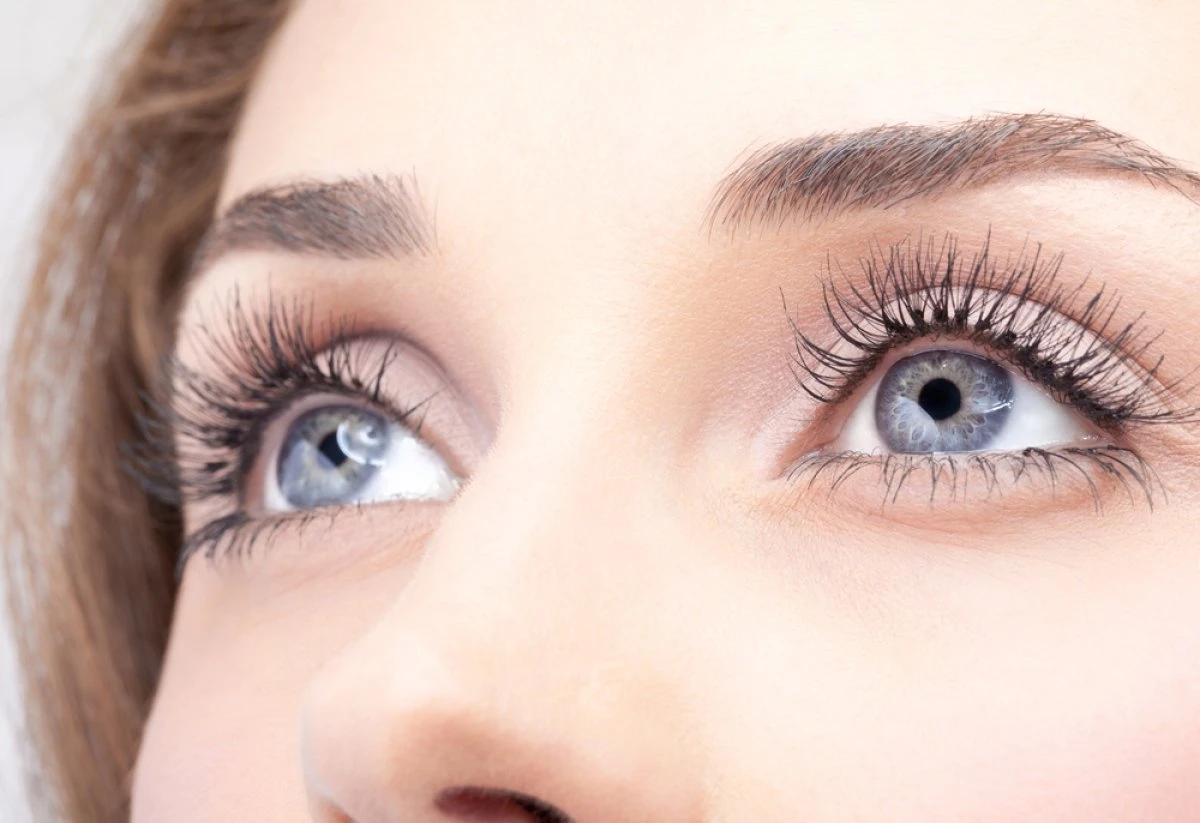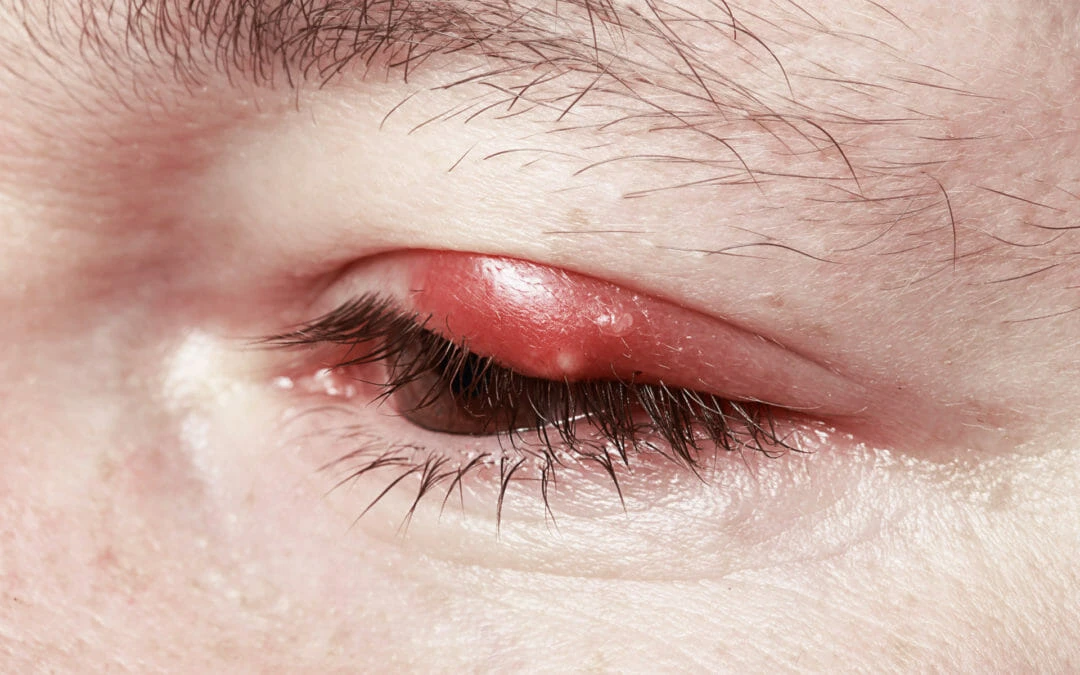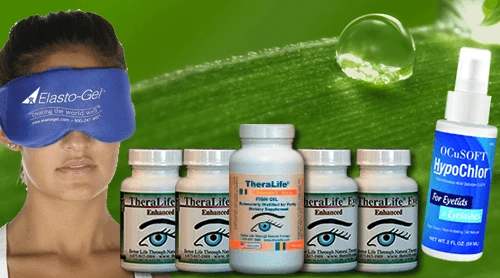Chalazion treatments and more.
Chalazion is a common eye condition characterized by the presence of an inflamed, swollen bump on the eyelid. It is typically caused by blockage of one or more of the glands in the eyelid. While chalazia can be uncomfortable and may cause vision problems, there are a variety of effective treatments that can help to reduce inflammation and resolve the condition. In this article, we provide an overview of potential treatments for chalazion, from warm compresses to antibiotics.
The first line of treatment for chalazia is often warm compresses applied several times a day. The warmth helps to increase circulation in affected area and soften any hardened tissue, which can then be expressed manually with gentle pressure. Another option is to use topical antibiotics such as bacitracin or gentamicin ointment applied directly to the eyelid. Oral antibiotics may also be prescribed if topical treatments are not effective. In some cases, surgical removal may be necessary if other treatments fail to resolve the condition.
Finally, it is important to note that proper hygiene is essential for treating chalazion effectively. This includes regularly cleaning around and under the eyelashes with soap and water as well as avoiding touching or rubbing the eyes after touching other objects or people. By following these steps along with one or more of the above-mentioned treatments, patients can successfully manage their chalazion and reduce discomfort associated with it.
Definition Of Chalazion
A chalazion is a small, painless lump that develops on the eyelid when the meibomian glands become blocked. An estimated 15-25% of people will experience this condition at least once in their lifetime1. This article discusses the definition of chalazion, its symptoms, causes and risk factors, as well as treatments available to alleviate discomfort.
The meibomian glands are located in the upper and lower eyelids, and secrete an oily substance that helps keep tears from evaporating quickly. A blocked gland can cause a collection of oil under the skin surface, forming a small round lump on the eyelid that is visible to the naked eye. This lump may range in size from 0.5 cm to 2 cm. Chalazia can occur on both eyes simultaneously or one eye only.
Symptoms associated with chalazia include swollen eyelids and irritation. If left untreated, chalazia may become more painful or tender. It is important to seek medical help if these symptoms continue for more than two weeks. With proper diagnosis and treatment, most cases will resolve within four weeks.
In some cases, infection may develop due to complications with a chalazion. In order to prevent further infection or worsening of symptoms, it is important to receive prompt medical attention if any signs or symptoms occur. The next section discusses causes and risk factors associated with developing a chalazion.
Causes And Risk Factors
Chalazions, or lid granulomas, are localized inflammatory lesions of the eyelid caused by obstruction of meibomian glands. Common causes for chalazion formation include eyelid rubbing or trauma, bacterial infection and blockage of oil glands from oil gland dysfunction. Eyelid rubbing has been identified as an important factor in the development of chalazion. This is because eyelid rubbing can lead to trauma to the eyelid and subsequent inflammation. Additionally, bacteria such as Staphylococcus aureus have been implicated in chalazion formation due to their ability to cause infection and inflammation on the eyelid. Furthermore, meibomian gland dysfunction may result in oil gland blockage and subsequent inflammation and swelling leading to chalazion formation.
The risk factors associated with developing a chalazion include chronic blepharitis, seborrheic dermatitis, rosacea and diabetes mellitus. Chronic blepharitis is a recurrent inflammation of the eyelids that increases the risk for developing a chalazion due to its association with increased bacterial growth on the eyelids. Similarly, seborrheic dermatitis is another condition characterized by redness and flaking skin around the eyes which increases risk for developing chalazions due to its inflammatory nature. Rosacea is known to increase susceptibility for developing ocular complications such as conjunctivitis and chalazia due to its effect on skin tissue surrounding the eye area. Lastly, diabetes mellitus has also been linked with increased risk for developing various ocular conditions including chalazia due to its effect on immune system function.
Considering these causes and risk factors associated with developing a chalazion, it is important that diagnosis process be followed accurately in order to identify underlying cause and determine most effective treatment plan.
Diagnosis Process
According to a study by the American Academy of Ophthalmology, chalazions are the most common eyelid disorder in people over the age of 65. The diagnosis process for a chalazion involves an eye examination, which typically involves a review of medical history and visual acuity testing. Depending on the severity of the patient’s condition, additional imaging tests such as slit-lamp biomicroscopy or ultrasound may be required. During the eye examination, ophthalmologists will also carefully observe any signs of other related diseases that may require further treatment.
In some cases, doctors may recommend performing culture tests to identify any possible bacterial infections underlying the chalazion. Additionally, they may suggest performing laboratory tests such as blood tests or skin biopsies in order to rule out any other potential causes.
The results of all these tests can be used by ophthalmologists to diagnose chalazions accurately and provide appropriate treatments accordingly. With an accurate diagnosis and prompt treatment, patients can expect successful outcomes from their chalazion treatments. Transitioning into home remedies for chalazion treatments, many people turn to natural methods first before seeking professional medical assistance.
Home Remedies
The use of home remedies is a common approach to chalazion treatments. Warm compresses are recommended for treating chalazion, as the heat helps to reduce inflammation and promote healing. Natural remedies such as tea bags and hot cloths may be used. It is suggested to place a warm compress over closed eyes for 10-15 minutes, several times a day. An eye massage can also be beneficial in reducing inflammation and promoting drainage of the lesion. Additionally, natural oil such as castor oil can be massaged onto the eyelid which may help to reduce inflammation while providing additional lubrication to the area. It is important to note that these home remedies should only be used after consulting with an ophthalmologist or optometrist.
Eye Drops
Eye drops are a common form of chalazion treatments. Depending on the individual case, various types of eye drops may be prescribed. These can include antibiotic, prescription, over-the-counter, steroid, and chalazion eye drops.
* Antibiotic eye drops are used to treat bacterial infections that have caused the chalazion.
* Prescription eye drops are often stronger than over-the-counter ones and may be necessary to treat certain types of infections.
* Over-the-counter eye drops may be sufficient to provide relief from symptoms related to a chalazion.
* Steroid eye drops can reduce inflammation in the affected area and decrease pain associated with a chalazion.
* Chalazion eye drops can help reduce the size of the chalazion and reduce any discomfort associated with it.
The use of antibiotics or other medications should always be discussed with an ophthalmologist or other medical professional before use in order to ensure safe and effective use on an individual basis. Proper use of these chalazion treatments must also be followed in order to achieve optimal results while avoiding any potential side effects or complications. Therefore, it is important to follow all instructions provided by your doctor or pharmacist carefully when using any type of medication for a chalazion.
Oral medication may also be used as a treatment option for chalazions depending on the severity of the condition.
Oral Medication
When it comes to chalazion treatments, the options seem to be limitless. From warm compresses to antibiotics, there are a multitude of ways to treat these pesky bumps on the eyelid. One of these options is oral medication. Taking oral medications can prove to be an incredibly effective way to reduce the size and discomfort associated with a chalazion.
| Oral Medication | Systemic Antibiotics | Topical Antibiotics |
|:—————-:|:——————:|:——————:|
| Tetracycline | Ofloxacin | Erythromycin |
| Clindamycin | Ciprofloxacin | Azithromycin |
| Amoxicillin | Levofloxacin | Doxycycline |
The most common type of oral medication prescribed for chalazia is tetracycline or doxycycline, which are systemic antibiotics that work by reducing inflammation and preventing infection. Other systemic antibiotics that may be prescribed include ciprofloxacin, levofloxacin, and ofloxacin. Additionally, topical antibiotics such as erythromycin or azithromycin may also be prescribed for more severe cases of chalazia. Nonsteroidal anti-inflammatory drugs (NSAIDs) such as ibuprofen or naproxen may also be prescribed in order to reduce swelling and pain associated with a chalazion.
It is important to speak with your doctor before taking any type of medication for chalazion treatments in order to ensure safety and effectiveness. While taking prescription medications can provide relief from a chalazion, it is important to remember that they should only be used as directed by your healthcare provider. With careful consideration and proper treatment plan, oral medications can help bring much needed relief from painful and persistent chalazia.
Moving onto corticosteroid injections…
Corticosteroid Injections
Corticosteroid injections are a common treatment for chalazion. This form of medication is highly effective in reducing inflammation, redness, and swelling. Depending on the severity of the condition, a doctor may choose to administer one or more injections over the course of several weeks. The injection is typically administered directly into the chalazion using a small-gauge needle. It is important to note that corticosteroid injections can have adverse effects such as pain, infection, and scarring. Patients should be aware of these potential risks before undergoing this form of chalazion treatments.
As with any medical procedure, it is important for patients to discuss all options with their healthcare provider before deciding on a course of action. A doctor will evaluate the size and severity of the chalazion before determining if corticosteroid injections are an appropriate treatment option. If they decide that this course of action is necessary, they will provide instructions on how to prepare for the procedure and what to expect afterwards.
The effectiveness of corticosteroid injections varies from person to person; however, many people find them beneficial in reducing inflammation and resolving their chalazion quickly and safely. Following up with a doctor after treatment is recommended in order to monitor progress and ensure that no further chalazion treatments are needed. Transitioning into surgical removal may be necessary if the chalazion does not respond adequately to other chalazion treatments including corticosteroid injections.
Surgical Removal
Surgical removal for a chalazion is considered when other chalazion treatments have been ineffective. It involves the excision of the lesion and can be done in an outpatient setting under local anesthesia. Eyelid surgery, also known as ocular surgery, may be necessary to excise the lesion if it is located on the eyelid margin itself. In some cases, a conjunctival flap may be needed to access the lesion and ensure complete removal while preserving healthy tissue. During the procedure, all inflammatory material is removed from within the lesion and any remaining debris is suctioned away.
The surgical site is then closed with sutures and topical antibiotics are applied to reduce the risk of infection. Pain medication may also be prescribed as needed following surgery. The sutures will typically be removed during follow-up care several days after surgery, unless absorbable suture material was used which does not require removal. The duration of healing time may vary depending on individual factors such as age, overall health status and post-operative care instructions that are followed.
Follow-Up Care
When it comes to Chalazion treatments, the saying “prevention is better than cure” certainly holds true. Follow-up care is a crucial part of any successful treatment plan and should not be overlooked. Post-treatment check-ups are essential for monitoring progress and ensuring that the patient’s condition does not worsen. An eye examination should be done after each treatment session to ensure that there are no unusual changes or signs of infection present. Monitoring visits should occur at regular intervals, where the patient’s response to the treatment can be evaluated and further action taken if needed.
It is also important for patients to follow their aftercare instructions carefully in order to prevent any complications from developing. These instructions may include avoiding strenuous activities, using prescribed eye drops, applying warm compresses regularly, or taking oral medications as directed by a doctor. In addition, patients should also inform their doctor immediately if any unexpected symptoms arise during the healing process.
Follow-up care is an important part of any successful Chalazion treatments plan and should not be neglected. By taking proper precautions and adhering to their doctor’s instructions, patients can help ensure that their recovery progresses smoothly with minimal risk of complication. Moving forward, it is essential to consider potential complications and preventive measures as well.
Complications And Prevention
Chalazion-related vision loss can occur if a chalazion is left untreated. In some cases, the chalazion may cause scarring of the eyelid or lead to damage of the tear glands in the eye. In rare cases, a chalazion can cause decreased vision due to astigmatism, glaucoma, or optic nerve damage. To prevent these serious complications, it is important to seek chalazion treatments as soon as possible.
Chalazion-preventative measures include proper hygiene and regular visits to an ophthalmologist for preventative eye care. Cleaning the face and eyelids daily with a mild cleanser can help reduce the risk of developing a chalazion. Additionally, avoiding rubbing or touching the eyes can decrease the chance of infection and inflammation.
When considering potential chalazion treatments, it is important to consider their safety and efficacy. Both warm compresses and antibiotics are considered safe and effective chalaziann treatments when performed correctly. However, if symptoms worsen or do not improve after self-care measures are taken, consulting with a healthcare provider is recommended.
It is critical that individuals with any signs of a chalazion take preventative measures to avoid complications associated with this condition. Proper hygiene practices, annual eye examinations by an ophthalmologist, and seeking medical attention when necessary are essential steps in reducing risks associated with this condition.
##Frequently Asked Questions
How Soon Can I Expect To See Improvement After Using A Chalazion Treatment?
Like a lighthouse in the night, hope is on the horizon when it comes to chalazion treatments. While there are a variety of chalazion treatments available, it is important to understand the expected outcome and time frame for improvement when considering which option to pursue.
When examining treatment results for chalazion, the effectiveness of the treatment chosen depends on how quickly improvement can be seen after its application. Depending on the severity of the condition, an individual may begin to see visible signs of improvement anywhere from a few days to several weeks after beginning treatment. For mild cases, warm compresses applied three or four times daily have been known to resolve chalazion within one week with no additional intervention necessary. For more severe cases, antibiotics may be prescribed and require multiple weeks before any noticeable changes occur.
It is also important to note that while most treatments will yield positive results over time, some individuals may require more than one type of treatment before seeing any sign of improvement in their overall health and well-being. In these instances, patients should be proactive in communicating with their healthcare provider so that they can adjust their approach if needed and ultimately achieve desired results.
In summing up, understanding the expected outcome and time frame for improvement associated with various chalazion treatments is essential when choosing a course of action. With an informed decision made based on medical knowledge and personal needs, each individual has an opportunity to find relief from this condition in a timely manner.
Are There Any Natural Alternatives To Antibiotics For Chalazion Treatments?
The current H2 asks, “Are there any natural alternatives to antibiotics for chalazion treatment?” Chalazion is a small, painless lump that appears on the eyelid due to a clogged tear duct. Treatment of this condition typically involves antibiotics and other medications. However, some people may prefer natural remedies over the use of antibiotics and medications.
Natural remedies for chalazion treatment include warm compresses, tea tree oil eye drops, and manuka honey. Warm compresses are effective in reducing inflammation and can help reduce swelling in the eyelids. Tea tree oil has antimicrobial properties that may help fight infection and reduce symptoms associated with chalazion. Honey has been found to have anti-inflammatory properties that can help reduce symptoms of the condition as well. It is important to note that these natural remedies should be used in combination with medical advice from a doctor or healthcare provider.
Key to preventing recurrence of chalazion is to treat the underlying cause of chronic dry eyes. When dry eye condition improves, less oil gland cloggings, thus less chalazion. Learn more here.
In addition to natural remedies, other treatments for chalazion include corticosteroid injections and topical antibiotics. Corticosteroid injections can be used to reduce inflammation quickly and effectively. Topical antibiotics can be used as an alternative to oral antibiotics and may help reduce symptoms associated with chalazion. It is important to consult a doctor before using any medication or natural remedy for treating chalazion.
When considering treatment options for chalazion, it is important to weigh the benefits of both natural remedies and traditional medications such as antibiotics or corticosteroid injections. Natural remedies such as warm compresses, tea tree oil eye drops, and honey may provide relief from symptoms associated with chalazion but should always be discussed with a doctor prior to use. Alternatively, traditional treatments such as corticosteroid injections or topical antibiotics may provide more immediate relief but come with potential side effects that must be considered before use.
Are There Any Lifestyle Changes I Can Make To Reduce The Risk Of Developing A Chalazion?
Chalazion is a localized swelling of the eyelid due to blockage of an oil gland. It is important to reduce the risk of developing a chalazion in order to prevent it from occurring in the first place. There are several lifestyle changes that may be beneficial in avoiding eye strain and preventing chalazion from developing.
A healthy diet and regular exercise are key components to reducing the risk of developing any medical condition, including chalazion. Eating nutrient-dense foods such as fruits, vegetables, whole grains, and lean proteins can help maintain overall health and well being. Additionally, regular physical activity may help strengthen the immune system which can also reduce the likelihood of developing some medical conditions.
In addition to healthy eating and exercising habits, taking steps towards good eye hygiene may also help prevent chalazion from occurring. Wearing sunglasses when outside can protect eyes from dust and direct sunlight which can irritate or damage them. Additionally, regularly cleaning glasses or contact lenses with appropriate solutions may prevent bacteria build up on them that could cause eye infections. Taking short vision breaks throughout the day is another way to avoid overworking eyes which can lead to eye strain or other issues such as chalazion.
By making these lifestyle changes and taking preventive measures, individuals may be able to reduce their chances of developing a chalazion. It is important for individuals at risk for this condition to take special care when it comes to diet, exercise, and eye hygiene habits in order to ensure long-term health of their eyes.
How Often Should I Use Eye Drops To Treat My Chalazion?
When it comes to the treatment of a chalazion, eye drops are an important part of most regimens. But how often should they be used? This article will explore the frequency of using eye drops for chalazion treatment and provide guidance to help patients achieve the best outcomes.
Eye drops can be used to reduce inflammation in the eyelid area associated with a chalazion. A patient’s doctor or optometrist can recommend a suitable product and dosage instructions, which may include using eye drops several times a day for several weeks or months. Additionally, antibiotics may also be prescribed if a bacterial infection is present.
In general, it is recommended that eye drops for chalazion treatment be used two to four times daily until symptoms improve. For some people, this means regular use over several weeks or months; others may need to use them more frequently depending on their individual situation. Some doctors may also suggest adding warm compresses or other treatments as needed to reduce inflammation and speed healing time.
It is important to follow your doctor’s advice on how often you should use your chalazion eye drops as incorrect usage could lead to further complications such as dry eyes or even infection. Regular checkups with your ophthalmologist are also advised during treatment so that any changes in your condition can be monitored closely and adjustments made accordingly. Ultimately, by following your doctor’s recommendations and properly using eye drops for chalazion treatment as prescribed, you can help ensure successful results.
Are There Any Potential Side Effects To Corticosteroid Injections?
Corticosteroid injections are a common treatment for chalazion and can be effective in reducing inflammation. However, it is important to consider the potential side effects and risks associated with the use of these injections. This article will discuss the potential side effects of corticosteroid injections for chalazion.
Corticosteroids are a type of drug that can help reduce inflammation and swelling in affected areas. When injected into a chalazion, corticosteroids can help reduce swelling and improve vision. However, there are some potential side effects associated with their use. These may include but not limited to redness and soreness at the injection site, increased risk of infection, blurred vision, cataracts, glaucoma, or systemic side effects such as weight gain, insomnia or mood changes. It is important to discuss any potential side effects with your doctor before deciding on this treatment option.
In addition to the risks associated with prolonged use of corticosteroid injections, there are also general safety considerations that should be taken into account before undergoing this procedure. These include allergies to medications or other substances used in the injection process, as well as any existing medical conditions that could increase the risk of complications from this procedure. It is important to inform your doctor about all medications you are taking prior to receiving corticosteroid injections for your chalazion to ensure safe and successful treatment outcomes.
It is essential to discuss all potential risks and benefits of corticosteroid injections for chalazion with your doctor before deciding if this treatment option is right for you. Understanding all aspects of this treatment can help you make an informed decision regarding its use for treating your condition.
Conclusion
Chalazia, or eyelid bumps, can be a frustrating and often embarrassing condition to deal with. Fortunately, there are a variety of treatments available that can be effective in reducing the size and severity of the chalazion. Warm compresses can help to reduce inflammation and may even lead to spontaneous resolution of the chalazion. In cases where warm compresses are not successful, antibiotics may be prescribed to eliminate any underlying infection. For those looking for natural alternatives, lifestyle changes such as keeping the eyes clean and avoiding contact lenses may also help prevent reccurrence. Finally, corticosteroid injections may offer a more aggressive approach for more severe cases of chalazia, though potential side effects should be considered before proceeding with this type of treatment.
Despite the challenges associated with managing chalazia, there is hope for successful treatment through a combination of these methods. As with any medical condition, it is important to consult your healthcare provider to determine what approach is best suited for your individual case. By working together with your doctor and following their instructions carefully, you will have taken an important step towards restoring comfort and clarity to your vision.
The struggle against chalazia can seem daunting; however, by taking an active role in understanding available treatments and making necessary lifestyle adjustments we can create a path towards recovery. With diligence and perseverance we can all enjoy clear vision once again.




